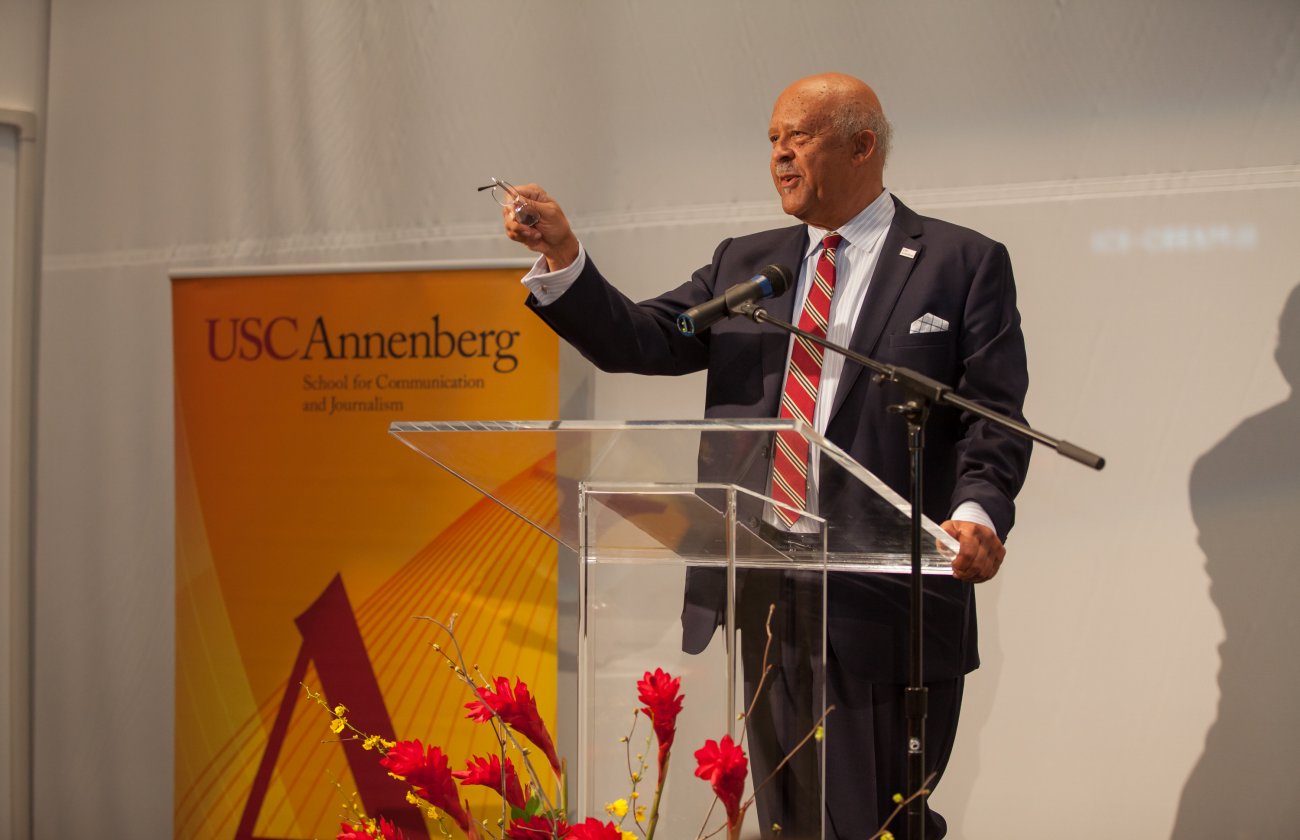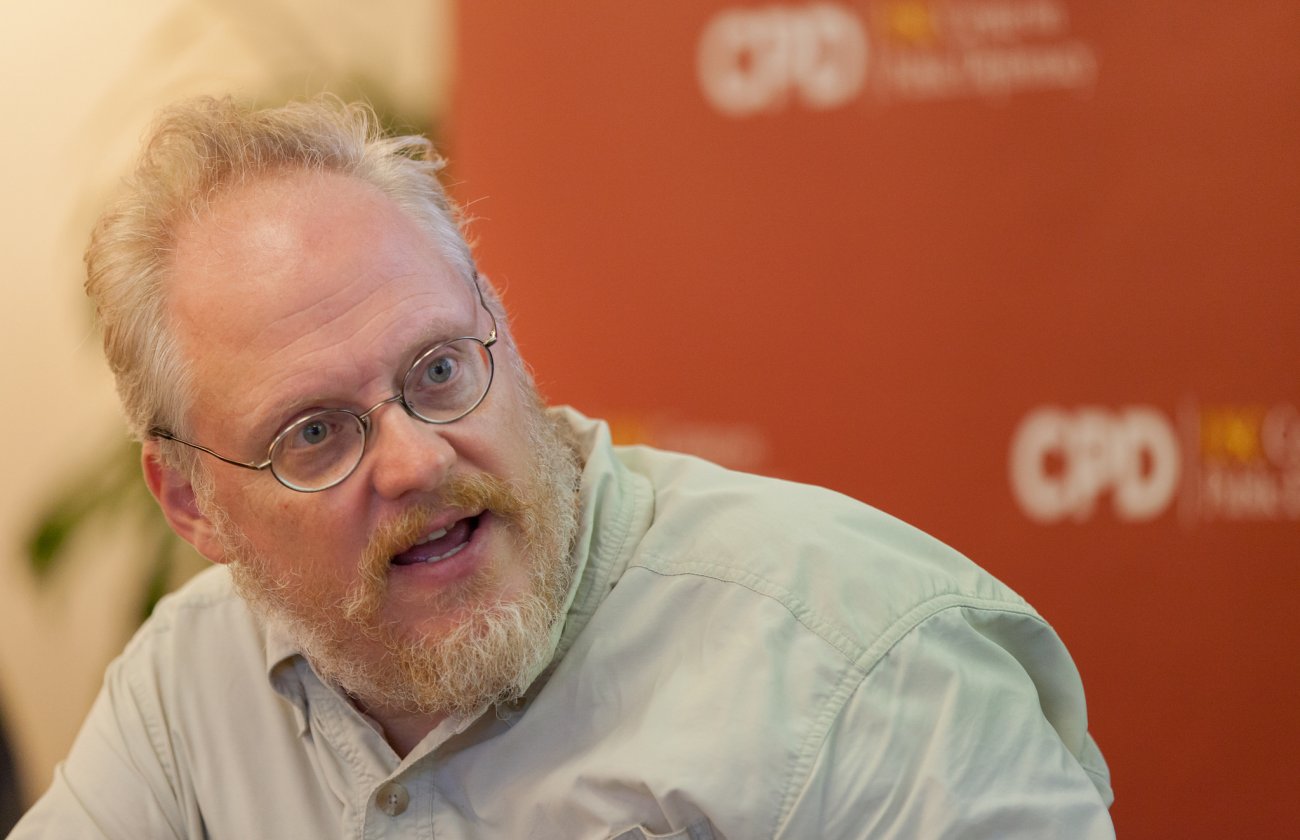By Susana Guerrero
Some people believe journalists are liars with hidden agendas. Others believe they cannot be fully trusted and will stop at nothing to have a breaking story. But it turns out that journalists are actually really heroic individuals — at least that’s what Professor Joe Saltzman’s latest research finds on the media representation of a Washington, D.C. journalist.
Saltzman has devoted much of his career researching and analyzing these representations in a project with the Norman Lear Center titled, “The Image of a Journalist in Popular Culture.”
Throughout his research, Saltzman has been able to examine the conflicting images of journalists in all forms of media including: film, television, radio, music, art and works of fiction. It’s all in an effort to view how Americans perceive news gatherers.
Recently Saltzman and Liz Mitchell, the IJPC Senior Research Associate, co-wrote a focused study on the image of a Washington, D.C. journalist.
“In all of our research the two images of the journalist that always seem to be more positive than negative were the war correspondent and the Washington D.C. journalist,” Saltzman said. “So we decided to do a very specific study analyzing the Washington, D.C. journalist in movies and television.”
In this never before done research, 127 English-speaking movies and television programs from 1932 to 2013 were assessed. The films and television programs were viewed, excerpted and categorized by decade, genre, ethnicity, media category, job title and description, Saltzman explained.
Throughout the study, he began to see that the D.C. journalist was depicted in a range of ways. One of his findings was that any reporter must be willing to go to any lengths to get a story even if it means violating every ethical code in existence.
But generally, the D.C. reporter was seen in good light, Saltzman explained.
The District of Columbia journalist is one of the more heroic images of a news gatherer in popular culture, according to his study. These images reassure the public that journalists are protecting the public’s interest, while the negative images show that even the fourth estate is susceptible to influence and corruption, the study found.
The results were not surprising, Saltzman admitted.
“Most of the results might have been predicted,” Saltzman said. “Just as in real life, male Caucasians overwhelmingly dominate the image of the Washington, D.C. Journalist. The preponderance of images, however, are members of the Washington, D.C. press corps who show up at every press conference, and anonymous journalists traveling in packs chasing news source and doing whatever they can to get a quote from some public official.”
Furthermore Saltzman’s findings, in a sense, transcend to real life.
“In movies, Washington journalists tend to be comic figures or serious dramatic figures, but they all seem to want to do the right thing — exposing crooked politicians to public scrutiny,” Saltzman said. “While there may be fewer such examples in real-life, they do exist.”
Twenty-five years ago Saltzman began studying the image of a journalist in popular culture. By the year 2000, he founded the IJPC study.
“It wasn’t considered an academic discipline and few universities offered courses in the subject,” Saltzman said.
Since then, his research has come a long way. According to Saltzman, the website is the number-one worldwide source on the subject for academics, students and anyone interested in the subject. IJPC has more than 85 thousand extracts of journalists in film, television, radio, works of fiction, commercials, comic books, art and music Saltzman added.
“More than two-dozen universities offer courses in the subject and many use IJPC materials in those classes or in other classes on journalism and the news media,” Saltzman said.
Saltzman is currently teaching the study in his class Journalism 375: Image of a Journalist in Popular Culture this semester. He will teach Journalism 373: Journalism Ethics Goes to Movies and Journalism 599: Journalism Ethics Goes to the Movies Graduate Seminar next semester.
This month, Saltzman will present his findings to the National Press Club in the District of Columbia. He’s thrilled to present his findings to the Washington, D.C. journalists who will attend.
“I’m very excited about presenting our findings — including a 15-minute video of excerpts from our 8-hour-plus DVD set of movie and television program segments featuring Washington, D.C. journalists,” Saltzman said. “It will be interesting to see how they react to the video and the study’s conclusions.”
In addition to his upcoming presentation, Saltzman is in the process of conducting new research for the IJPC.
“We are working on a massive study of the image of the journalist in movies and television, 1914 to 2014,” he said. “It involves more than 7,000 titles and we have assembled a group of IJPC researcher-reviewers to evaluate each film, TV program or TV series. We hope to have it finished by 2016.”









